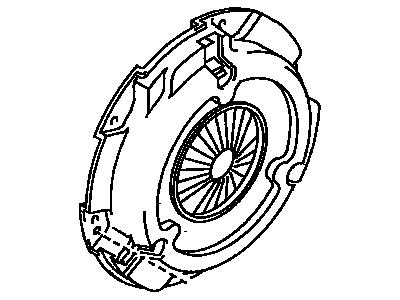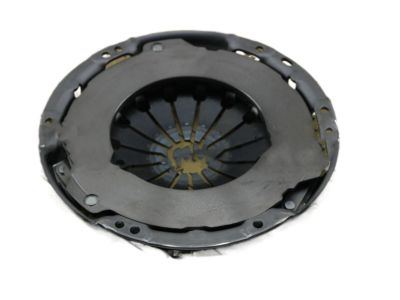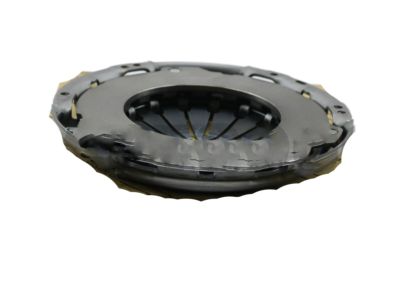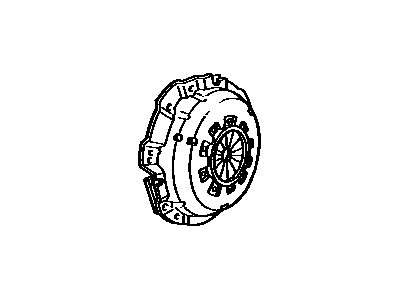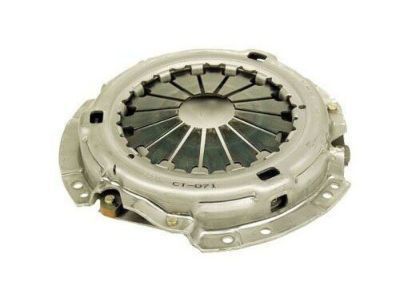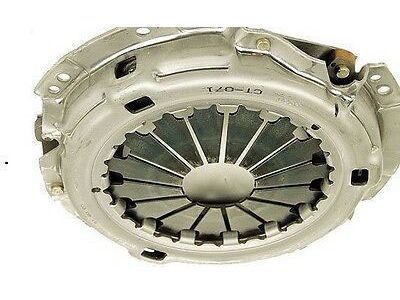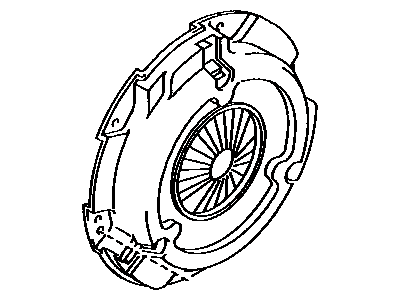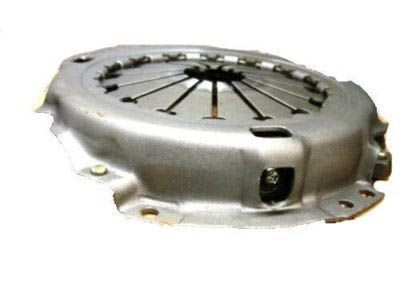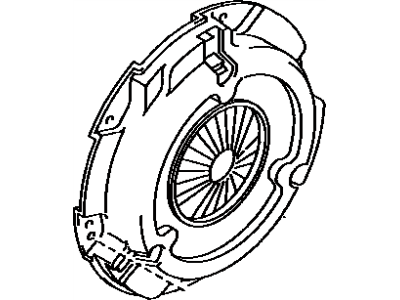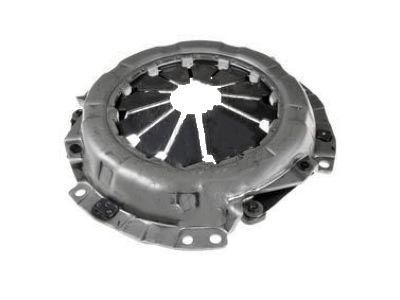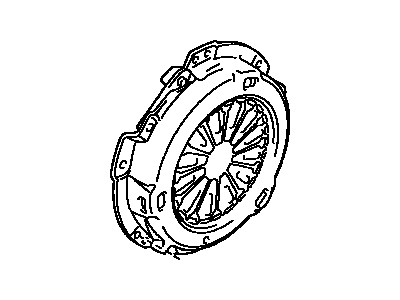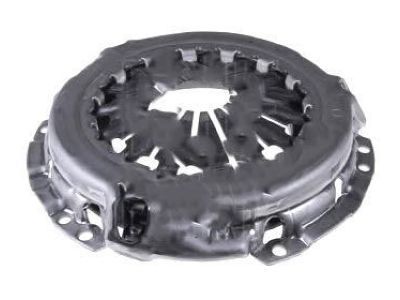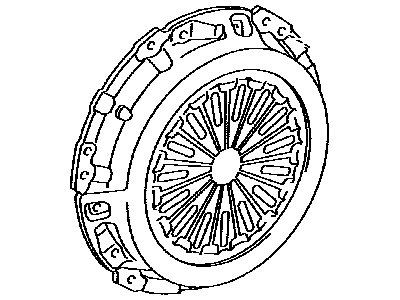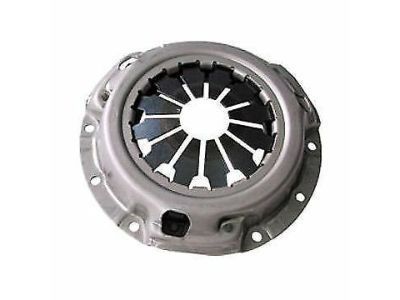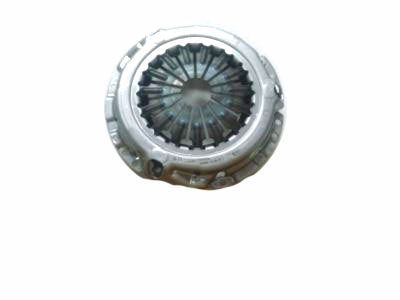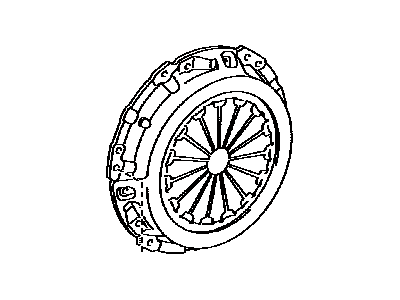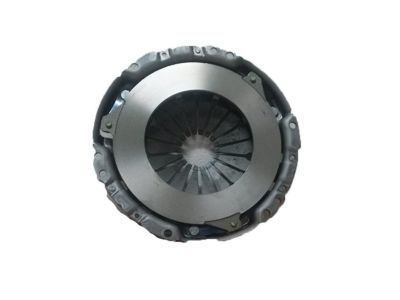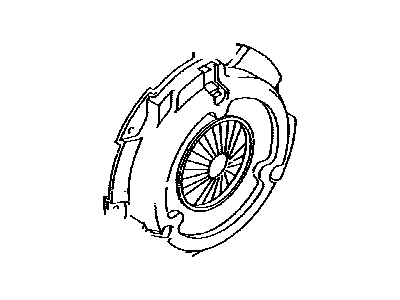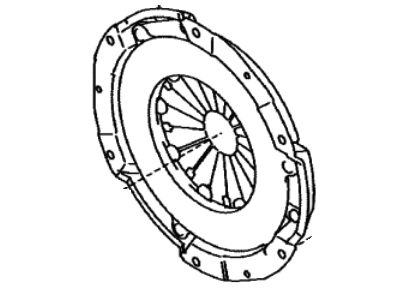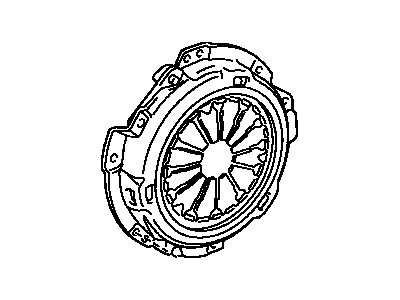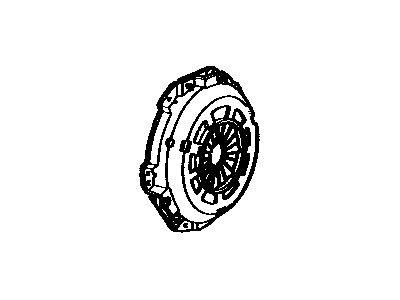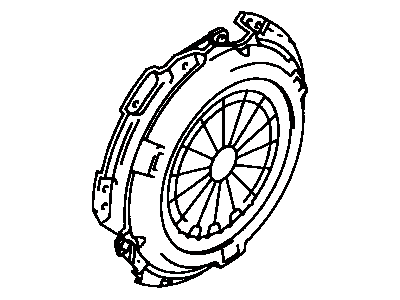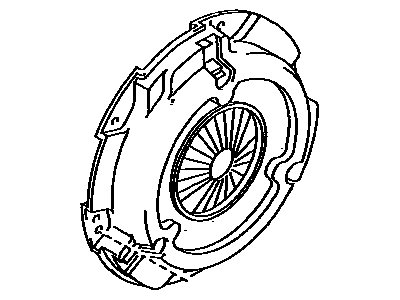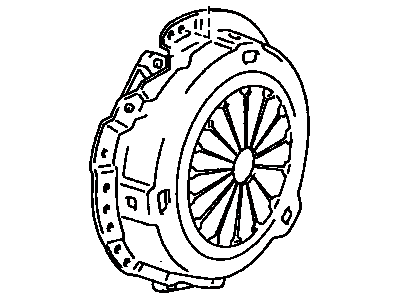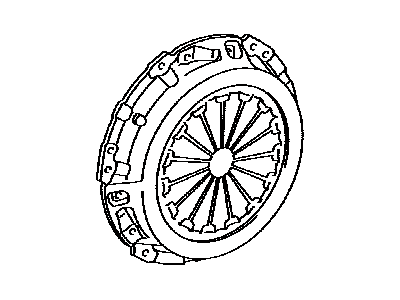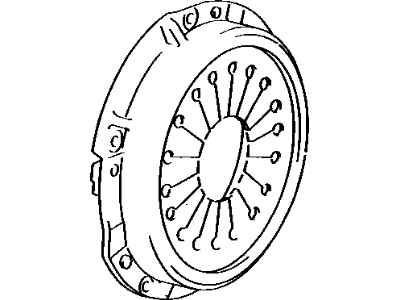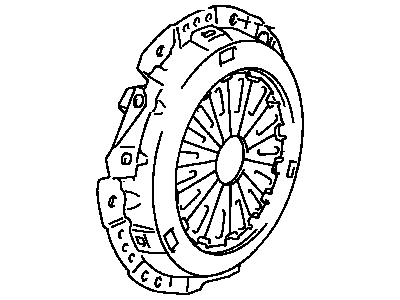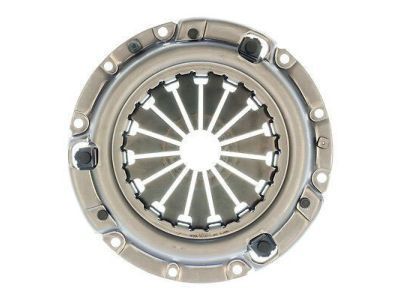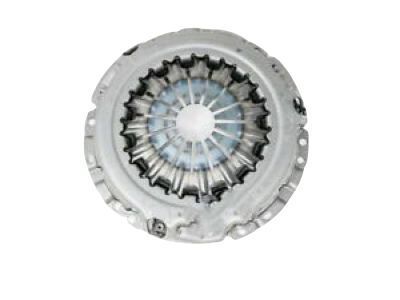×
ToyotaParts- Hello
- Login or Register
- Quick Links
- Live Chat
- Track Order
- Parts Availability
- RMA
- Help Center
- Contact Us
- Shop for
- Toyota Parts
- Scion Parts
My Garage
My Account
Cart
OEM Toyota Pressure Plate
Clutch Pressure Plate- Select Vehicle by Model
- Select Vehicle by VIN
Select Vehicle by Model
orMake
Model
Year
Select Vehicle by VIN
For the most accurate results, select vehicle by your VIN (Vehicle Identification Number).
62 Pressure Plates found
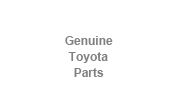
Toyota Pressure Plate
Part Number: 31210-42021$200.72 MSRP: $286.58You Save: $85.86 (30%)Ships in 1-2 Business DaysProduct Specifications- Other Name: Cover Assembly, Clutch; Clutch Kit
- Replaces: 31210-42020, 31210-42010

Toyota Pressure Plate
Part Number: 31210-53040$184.99 MSRP: $264.12You Save: $79.13 (30%)Ships in 1-2 Business DaysProduct Specifications- Other Name: Cover Assembly, Clutch; Clutch Kit
- Replaces: 31210-35102, 31210-30182, 31210-35100, 31210-24010, 31210-24011, 31210-22161, 31210-35101

Toyota Pressure Plate
Part Number: 31210-32130-84$73.04 MSRP: $102.74You Save: $29.70 (29%)Ships in 1-3 Business DaysProduct Specifications- Other Name: Clutch Cover, Reman; Clutch Kit
- Replaces: 31210-33010, 31210-20240, 31210-32130

Toyota Pressure Plate
Part Number: 31210-12152-84$65.63 MSRP: $92.28You Save: $26.65 (29%)Ships in 1-3 Business DaysProduct Specifications- Other Name: Clutch Cover, Reman; Clutch Kit
- Replaces: 31210-17012, 31210-12150, 31210-17011, 31210-12152, 31210-12151

Toyota Pressure Plate
Part Number: 31210-17041$165.43 MSRP: $234.19You Save: $68.76 (30%)Ships in 1-3 Business DaysProduct Specifications- Other Name: Cover Assembly, Clutch; Clutch Kit
- Replaces: 31210-17040

Toyota Pressure Plate
Part Number: 31210-12340$132.76 MSRP: $187.94You Save: $55.18 (30%)Ships in 1-2 Business DaysProduct Specifications- Other Name: Cover Assembly, Clutch; Clutch Kit

Toyota Pressure Plate
Part Number: 31210-12291$145.34 MSRP: $205.74You Save: $60.40 (30%)Ships in 1-3 Business DaysProduct Specifications- Other Name: Cover Assembly, Clutch; Clutch Kit
- Replaces: 31210-20380, 31210-12250, 31210-20360, 31210-12251, 31210-12290
 Product Specifications
Product Specifications- Other Name: Cover Assembly, Clutch; Clutch Kit
- Replaces: 31210-05042, 31210-05041
Toyota Pressure Plate
Part Number: SU003-08589$252.91 MSRP: $361.10You Save: $108.19 (30%)Ships in 1-3 Business DaysProduct Specifications- Other Name: Cover Cp-Clutch; Cover Assembly, Clutch
Toyota Pressure Plate
Part Number: 31210-32121$188.05 MSRP: $268.50You Save: $80.45 (30%)Ships in 1-3 Business DaysProduct Specifications- Other Name: Cover Assembly, Clutch; Clutch Kit
- Replaces: 31210-32030, 31210-20190, 31210-32120
Toyota Pressure Plate
Part Number: 31210-30221$188.05 MSRP: $268.50You Save: $80.45 (30%)Ships in 1-3 Business DaysProduct Specifications- Other Name: Cover Assembly, Clutch; Clutch Kit
- Replaces: 31210-36028, 31221-19055, 31221-36025, 31210-36200, 31221-39056, 31210-36029
Toyota Pressure Plate
Part Number: 31210-35192$244.75 MSRP: $349.46You Save: $104.71 (30%)Ships in 1-3 Business DaysProduct Specifications- Other Name: Cover Assembly, Clutch; Clutch Kit
- Replaces: 31210-35071
Toyota Pressure Plate
Part Number: 31210-32102$194.58 MSRP: $277.81You Save: $83.23 (30%)Ships in 1-3 Business DaysProduct Specifications- Other Name: Cover Assembly, Clutch; Clutch Kit
- Replaces: 31210-32100, 31210-32101
Toyota Pressure Plate
Part Number: 31210-20351$224.95 MSRP: $321.18You Save: $96.23 (30%)Ships in 1-3 Business DaysProduct Specifications- Other Name: Cover Assembly, Clutch; Clutch Kit
- Replaces: 31210-20321, 31210-20320
Toyota Pressure Plate
Part Number: 31210-28030-84$71.14 MSRP: $100.04You Save: $28.90 (29%)Ships in 1-3 Business DaysProduct Specifications- Other Name: Reman Clutch Cover; Clutch Kit
- Replaces: 31210-28030
Toyota Pressure Plate
Part Number: 31210-52180$132.18 MSRP: $187.11You Save: $54.93 (30%)Ships in 1-3 Business DaysProduct Specifications- Other Name: Cover Assembly, Clutch; Clutch Kit
Toyota Pressure Plate
Part Number: 31210-14150-84$71.78 MSRP: $100.96You Save: $29.18 (29%)Ships in 1-3 Business DaysProduct Specifications- Other Name: Clutch Cover Reman; Clutch Kit
- Replaces: 31210-14150
- Product Specifications
- Other Name: Clutch Kit; Cover Assembly, Clutch
- Manufacturer Note: LUK
 Product Specifications
Product Specifications- Other Name: Reman Clutch Cover; Clutch Kit
- Replaces: 31210-35210
- Product Specifications
- Other Name: Cover Assembly, Clutch; Clutch Kit
- Replaces: 31210-12100, 31210-12181, 31210-20081, 31210-12180, 31210-20051, 31210-20080, 31210-20150, 31210-14050, 31210-20082, 31210-22030, 31210-20083
| Page 1 of 4 |Next >
1-20 of 62 Results
Toyota Pressure Plate
Choose genuine Pressure Plate that pass strict quality control tests. You can trust the top quality and lasting durability. Shopping for OEM Pressure Plate for your Toyota ? Our website is your one-stop destination. We stock an extensive selection of genuine Toyota parts. The price is affordable so you can save more. It only takes minutes to browse and find the exact fit. Easily add to cart and check out fast. Our hassle-free return policy will keep you stress-free. We process orders quickly for swift delivery. Your parts will arrive faster, so you can get back on the road sooner.
Toyota Pressure Plate Parts and Q&A
- Q: How to overhaul the pressure plate on Toyota Matrix?A:The pressure plate overhaul process begins with removal of manual transaxle components and then proceeds with the sequential removal of clutch release fork sub-assembly before extracting the fork and bearing from the transaxle assembly. Begin the process by removing the clutch release bearing assembly from the clutch release fork before moving to the release fork support from transaxle assembly and afterward taking off the release bearing hub clip and clutch release fork boot. Use a socket wrench to line up the matchmarks while untightening each bolt gradually until the spring tension frees, then remove the 6 bolt to disconnect the clutch cover assembly without letting the clutch disc assembly fall. After removing the clutch disc assembly maintain a clean status for the lining part and pressure plate and flywheel sub-assembly surface surface free from oil and foreign objects. Measure the distance of the rivet heads on the clutch disc assembly with vernier calipers to verify it stays below 0.3 mm (0.012 inch) before continuing; replace the clutch disc assembly if needed. Install the clutch disc assembly into the transaxle assembly while facing it in the right direction and run it through a dial indicator which should read less than 0.8 mm (0.031 inch) at most; replace if this limit is exceeded. Verify the clutch cover assembly diaphragm spring wear with vernier calipers to confirm both depth exceeds 0.5 mm (0.020 inch) and width exceeds 6.0 mm (0.236 inch); perform a replacement if necessary. A dial indicator must check the flywheel sub-assembly runout which should not exceed 0.1 mm (0.004 inch). Replace the component if required. To check the clutch release bearing assembly function properly turn it by hand under axial force conditions; perform a replacement of the release bearing assembly if required. Install the clutch disc assembly through Special Service Tool: 09301-00210 which should go first into the clutch disc assembly then into the flywheel sub-assembly while maintaining proper orientation. Install the clutch cover assembly by aligning the matchmarks before tightening the bolts in a specified order up to 19.1 Nm (195 kgf-cm, 14 ft. lbs.) torque while checking for disc centering. To inspect and adjust clutch cover assembly so diaphragm spring tip alignment can be checked with a dial indicator for maximum non-alignment of less than 0.5 mm (0.020 inch), Special Service Tool: 09333-00013 should be used to conduct any necessary adjustments. The transaxle assembly should receive the release fork support which requires 36.8 Nm (375 kgf-cm, 27 ft. lbs.) torques while the clutch release fork sub-assembly installation must be accompanied by application of release hub grease (Part No. 08887-01806) at contact points. Before installation of the clutch release bearing assembly you must apply clutch spline grease (Part No. 08887-01706) to the input shaft spline. Also verify that the release bearing slides easily once installed. End the installation process by installing both the clutch release fork boot together with the manual transaxle.
- Q: How to service and repair the pressure plate on Toyota Tacoma?A:Service and repair of the pressure plate begins by removing the transmission from the engine then disconnecting the clutch cover and disc by marking it up with matchmarks between the flywheel and clutch cover while loosening each bolt set by one turn at a time until spring tension is reduced. Carefully remove the clutch cover with the attached clutch disc while avoiding dropping the disc. The third step requires the removal of transmission components which include the boot together with the release bearing and fork. Inspect the clutch disc through an evaluation of rivet head depth that should be a minimum of 0.3 mm (0.012 inch) to determine if replacement is needed. Test the runout distance of the clutch disc with a dial indicator for no more than 0.8 mm (0.031 inch) and analyze the flywheel for no greater than 0.1 mm (0.004 inch) runout before making replacements as necessary. Inspect the pilot bearing by turning it by hand; if it sticks or has resistance, replace it by removing the 2 bolts at opposite points, using Special Service Tool: 09303-35011 to remove the pilot bearing, and then using Special Service Tool: 09300-30012 and a hammer to install the new pilot bearing, ensuring it rotates smoothly before installing 2 new bolts with specified torque values: 2RZ-FE Engine: 88 Nm (900 kgf-cm, 65 ft. lbs.), 3RZ-FE Engine: 26.5 Nm (270 kgf-cm, 19 ft. lbs.), and 5VZ-FE Engine: 85 Nm (850 kgf-cm, 63 ft. lbs.). Measuring the diaphragm spring for wear requires assessment of maximum depth at 0.6 mm (0.024 inch) and maximum width at 5.0 mm (0.197 inch), with replacement needed for both specifications. Inspection of the release bearing includes manual rotation; replacement should be performed if necessary. Place the clutch disc and clutch cover on the flywheel with Special Service Tool: 09301-00110. Realign the matchmarks while torquing the clutch cover bolts to 19 Nm (195 kgf-cm, 14 ft. lbs.). Then temporarily fasten the No. 1 and No. 2 bolts. Perform clockwise and counterclockwise movements on the diaphragm spring tip with the aid of a dial indicator. Verify a maximum non-alignment reading below 0.5 mm (0.020 inch) and adjust using Special Service Tool: 09333-00013 if required. The maintenance task includes applying 100 grams of grease part number 08887-01706 NLGI No. 2 molybdenum disulphide lithium base grease to three contact points of the release fork hub and push rod and release fork pivot point. Additionally, clutch spline grease should be applied to the clutch disc spline. Reinstall the transmission to the engine after fitting its boot followed by release bearing and fork installation.

